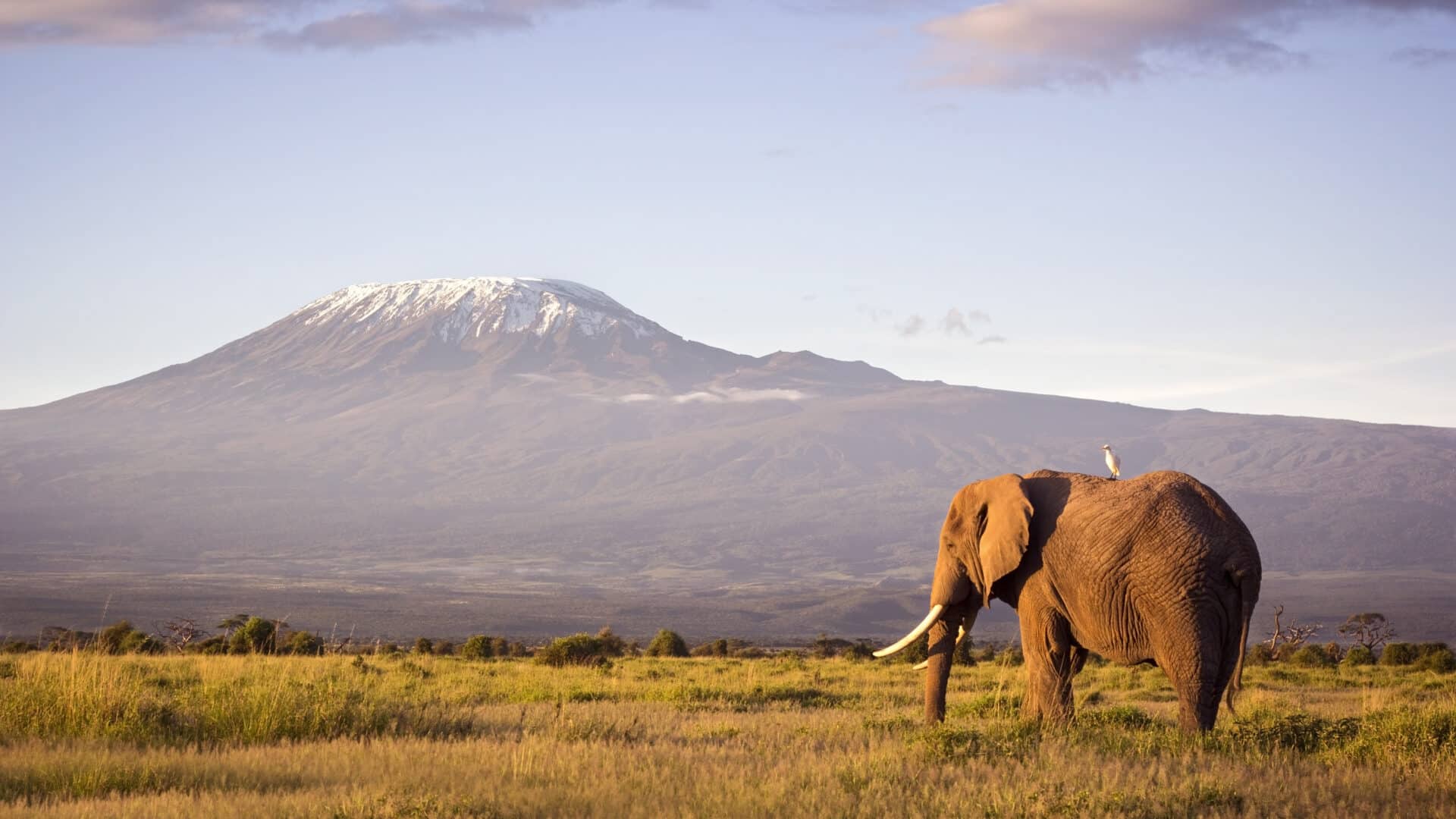Amboseli National Park is renowned for its large elephant herds and stunning views of Mount Kilimanjaro. Offering a quintessential African safari experience, here you can go on Big Four Kenya safaris. This national park consists of five different habitats: open plains, acacia woodland, thorn scrub, swamps, and marshlands, where a variety of animals meander.
The swamps in the middle of the park are a must-visit; here you’ll see hippos bobbing around, numerous birds fluttering about, many herbivores coming to drink, and elephants taking baths.
Must-Visit Areas in Amboseli National Park
Be enchanted by sweeping views of the park and a wetland popular with animals in the region:
Observation Hill: Stunning Views Over the Plains
Observation Hill is a landmark in Amboseli just to the west of Lake Kioko. An incredible experience awaits as you walk to the top of the hill; from here, you can spot large herds of game grazing on the plains.
Enjoy the panoramic views of the park, including swamps, marshlands, grassy plains, and woodlands teeming with wildlife.
Enkongo Narok Swamp: Hot Spot for Animal Viewing
This is a vital water source in the national park that attracts diverse wildlife, making it a must-visit spot for wildlife viewing. Enkongo Narok, meaning “black and benevolent”, is a belt of swamps with beds of papyrus and water lilies in the middle of the park.
Elephants come here for their baths, hippos can be seen in the water and on the banks, antelope species can be seen drinking, and numerous bird species are found here, making it an ideal place for birdwatching.
When’s the Best Time to Go to Amboseli National Park?
For the best wildlife viewing, plan your trip for the dry season in Kenya. During June to October, there is little to no rain to put a damper on Kenya safari trips, and the animals are easier to spot among the dry vegetation. If you want to concentrate on birdwatching, December to March is your best bet, as migratory birds are present at this time of the year.
Wildlife Found in Amboseli National Park
Four of the Big Five can be spotted here, though rhinos are not present. Leopards are in the park, but they are incredibly rare to see. The main attraction at Amboseli is the big-tusked elephants that call the park home. Many giraffes and zebras roam the plains, with cheetahs close behind. Unusual antelope species can also be found here, including the fringe-eared oryx and long-necked gerenuk.
How to Get to Amboseli National Park
You can land at Jomo Kenyatta International Airport in Nairobi, Kenya. From here, it’s around a three-and-a-half-hour drive to the national park via lodge transfer. Alternatively, you can fly to Amboseli Airport, the only airstrip in the national park.










 Copy Link
Copy Link
 Share on LinkedIn
Share on LinkedIn
 Share on Facebook
Share on Facebook











